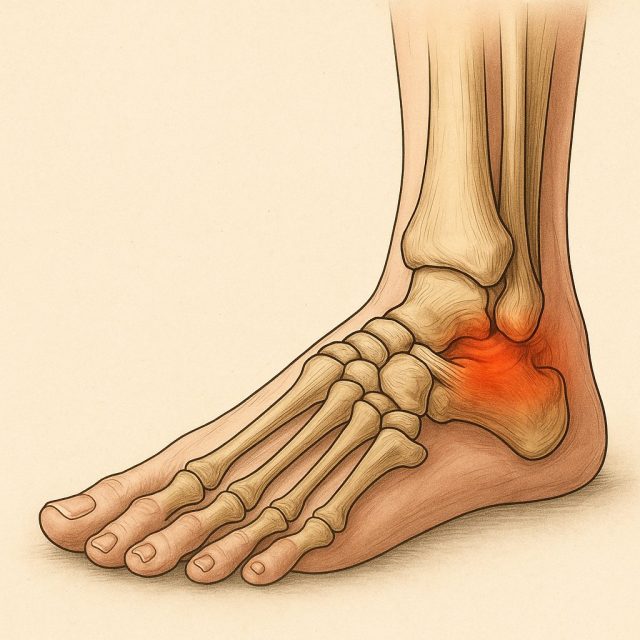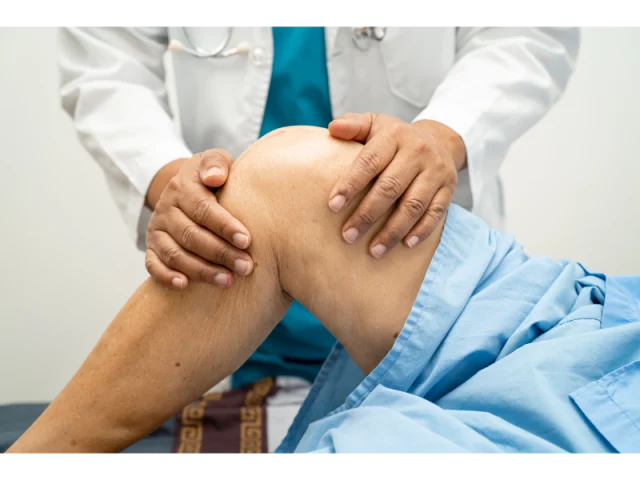ESWT (Shock Wave Therapy) is a non-invasive method used in the treatment of musculoskeletal disorders. This treatment is performed by directing high-energy sound waves to specific points on the body. ESWT accelerates the healing process and reduces pain by increasing blood flow in the tissues. It is an effective treatment option especially in chronic painful conditions such as tendonitis, plantar fasciitis, tennis elbow and calcaneal spur. Offered as an alternative to surgical intervention, ESWT is a fast and safe method and helps patients return to their daily life activities in a short time.
Contents:
- What is ESWT (Shock Wave) Therapy?
- How is ESWT Treatment Applied?
- What are ESWT Application Areas?
- What are the Benefits of ESWT (Shock Wave)?
- Is ESWT Treatment Painful?
- Does ESWT Treatment Work?
- Result
What is ESWT (Shock Wave Therapy)?
ESWT (Shock Wave Therapy) is a non-invasive method used in the treatment of musculoskeletal disorders. This treatment is performed by applying high-energy acoustic waves to the body. The shock waves penetrate the tissues in the targeted area, increasing blood flow, promoting cell regeneration and accelerating the healing process. ESWT is used as an effective treatment option, especially in conditions such as tendonitis, plantar fasciitis, tennis elbow, calcaneal spur and chronic muscle pain. During the treatment, the patient usually sits or lies in a comfortable position and gel is applied to the treatment area. The head of the device is then placed on the area to be treated and shock waves are sent. Sessions usually last 15-20 minutes and are performed once or twice a week. Most patients feel a significant reduction in pain after a few sessions. Side effects of ESWT are minimal and are usually limited to mild temporary pain or redness. It is an effective and safe alternative to surgical intervention.
How is ESWT Treatment Applied?
ESWT (Shock Wave Therapy) is an effective method used in the treatment of musculoskeletal disorders. The treatment is performed by directing high-energy sound waves to specific parts of the body. During the application, the patient sits or lies in a comfortable position. Gel is applied to the area to be treated and the head of the shock wave device is placed on this area. The sound waves penetrate through the skin into the deep tissues, reducing pain and inflammation, increasing blood flow and accelerating the healing process. Sessions usually last 15-20 minutes and are performed once or twice a week. Most patients feel a significant reduction in pain after a few sessions. ESWT therapy is widely used to treat conditions such as tendonitis, plantar fasciitis, tennis elbow and calcaneal spurs. Side effects are minimal and usually limited to mild temporary pain or redness. It is an effective and safe alternative to surgery. For more information about ESWT treatment and to make an appointment, it is recommended that you consult a specialist doctor.

What are ESWT Application Areas?
It is used as an effective method in the treatment of various musculoskeletal disorders. This treatment is widely preferred in the management of chronic pain such as tendonitis, plantar fasciitis, tennis elbow and calcaneal spur. It is also successfully used to treat sports injuries, musculoskeletal trauma and non-healing wounds. ESWT reduces pain, increases blood flow, accelerates the healing process of tissues and improves functional mobility. Other areas of application include impingement in the shoulder capsule, knee and hip joint pain and Achilles tendonitis. Thetreatment is offered as an alternative to surgical intervention and usually provides rapid recovery with minimal side effects.
What are the Benefits of ESWT (Shock Wave)?
ESWT (Shock Wave Therapy) offers many benefits in the treatment of musculoskeletal disorders. Firstly, the treatment reduces pain and relieves inflammation, which allows patients to resume their activities of daily living more comfortably. Shock waves accelerate the healing process by increasing blood flow and promoting cell regeneration. It is effective in chronic painful conditions such as tendonitis, plantar fasciitis, tennis elbow and calcaneal spur. It also provides successful results in sports injuries and musculoskeletal trauma. ESWT is offered as an alternative to surgery because it is minimally invasive and usually has minimal side effects. The treatment process is usually short and patients can recover quickly after treatment. These benefits of ESWT help patients manage their pain and improve their quality of life.

Is ESWT Treatment Painful?
ESWT (Shock Wave Therapy) usually causes mild discomfort, but most patients do not feel any significant pain during the treatment process. When the shock waves are applied, some patients may experience a slight stinging or discomfort, indicating that the tissues in the treatment area are being stimulated. However, this discomfort is usually short-lived and post-session pain is usually minimal. During treatment, patients may experience mild tenderness or redness at the treatment site. These symptoms usually disappear within a few hours after treatment. The pain level of ESWT can vary depending on individual pain threshold and the sensitivity of the treated area. Before the treatment, your doctor will provide information about possible discomfort and, if needed, make recommendations to reduce pain. In general, ESWT is recognized as an effective method to manage pain and promote the healing process.
Does ESWT Treatment Work?
ESWT (Shock Wave Therapy) is recognized as an effective method for the treatment of many musculoskeletal conditions. According to clinical studies and patient experience, ESWT provides significant improvement in chronic painful conditions such as tendonitis, plantar fasciitis, tennis elbow and calcaneal spurs. The shock waves reduce pain, relieve inflammation and speed up the healing process of tissues. The treatment manages pain and improves functional mobility by increasing blood flow and promoting cell regeneration. The effectiveness of ESWT can vary depending on the area being treated and individual circumstances, but most patients report positive results after several sessions. Its minimal side effects and non-invasive nature make ESWT an attractive alternative to surgical intervention. Therefore, ESWT stands out as an effective option for those who want to manage pain and improve quality of life.
Conclusion
Shock waves reduce pain, relieve inflammation and speed up the healing process. As a minimally invasive procedure, ESWT is usually performed with little discomfort and is preferred as an alternative to surgery. After treatment, most patients experience a rapid recovery and a significant reduction in pain. The effective results and minimal side effects of ESWT make it an ideal option for those looking to manage pain.























 Youtube Videolarım
Youtube Videolarım



